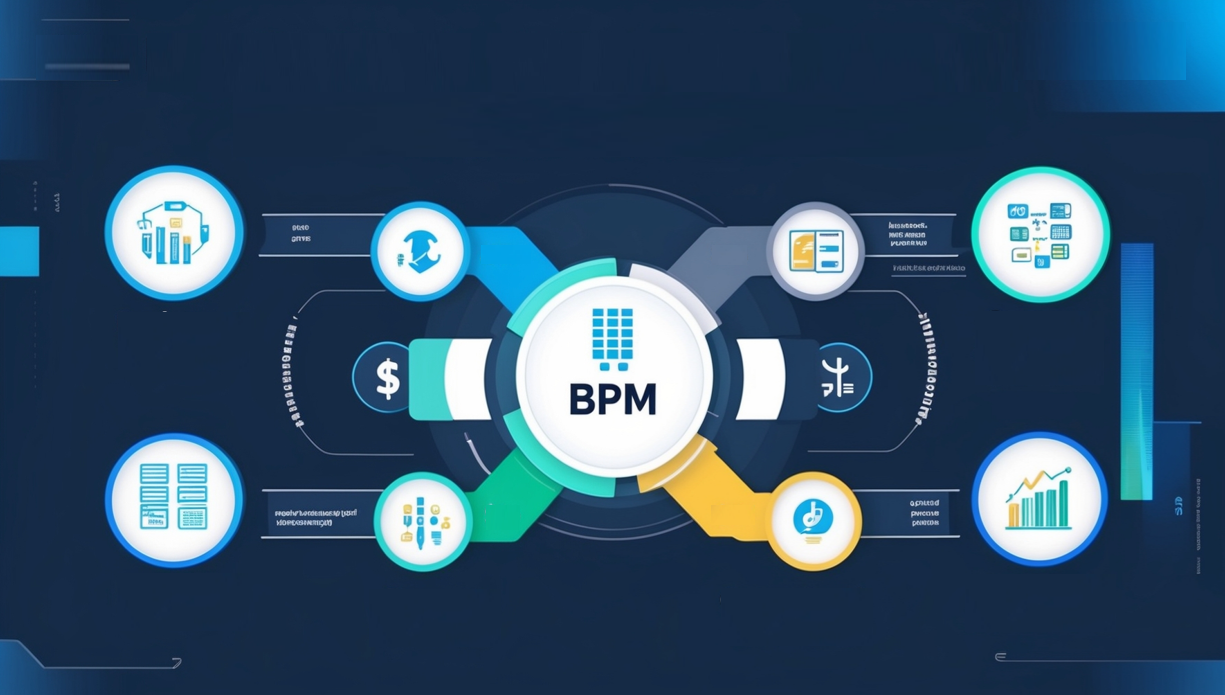The ability to efficiently manage and optimize processes is no longer optional; it’s a strategic necessity. Organizations across industries are increasingly recognizing the value of tools and technologies that provide real-time insights into their operations. This Business Process Management Benchmark Report offers a data-driven exploration of how leading enterprises leverage Business Process Management (BPM) to drive operational excellence, boost ROI, and stay ahead.
Modern enterprises face a constant demand for faster, more informed decision-making. As business operations grow in complexity, spanning global supply chains, human workflows, and IT systems, visibility becomes critical. Despite technological advancements, many businesses still rely on outdated systems that lack the agility and depth needed to monitor processes effectively. A study featured in the report reveals that over 70% of organizations prioritize improving real-time process visibility, reflecting a universal demand across sectors such as manufacturing, telecom, and financial services.
Despite its importance, effective implementation of BPM technologies is fraught with challenges. Organizations struggle with fragmented data, overly complex IT environments, and limited support from executives. A significant number of companies reported difficulties in consolidating data scattered across multiple sources, leading to delays in gaining actionable insights. Furthermore, nearly half of the survey respondents admitted to lacking the in-house IT skills required to fully exploit BPM technologies.
Failure to address these gaps has tangible consequences. Inefficiencies, operational bottlenecks, and missed business opportunities are just the beginning. Poor process visibility can result in critical oversights, such as inventory shortfalls or compliance risks, that disrupt operations and damage customer trust. Companies in highly regulated industries, such as finance, face additional risks, with inadequate monitoring potentially leading to severe legal and financial repercussions. As organizations grapple with these challenges, the lack of streamlined workflows can result in missed revenue opportunities and higher operational costs.
Enterprises that adopt BPM solutions stand to gain a competitive edge. The report highlights that Best-in-Class organizations achieve an average ROI of 18% through BPM implementation. By prioritizing real-time visibility and process monitoring, these leaders enhance customer satisfaction, reduce expenses by 12%, and increase revenues by 9%. Moreover, effective BPM adoption enables organizations to tackle complexity by integrating data, automating routine tasks, and empowering decision-makers with predictive insights. Tools like Business Activity Monitoring (BAM) further augment BPM suites, offering dashboards and alerts for proactive management.
This Business Process Management Benchmark Report underscores the transformative potential of BPM in helping organizations navigate the challenges of modern business. Through strategic adoption of BPM technologies, enterprises can unlock actionable insights, streamline processes, and build resilient systems that adapt to changing market demands. For businesses seeking to improve operational efficiency and achieve sustainable growth, this report serves as a comprehensive guide to understanding and harnessing the power of BPM.
Main Contents
- Real-Time Process Visibility: Explore how BPM systems enable organizations to monitor business processes in near real-time, improving decision-making and responsiveness.
- Challenges in BPM Implementation: Delve into common barriers such as IT complexity, data fragmentation, and lack of executive support, and their impact on BPM adoption.
- BPM vs. BAM Technologies: Understand the distinctions and complementary roles of Business Process Management (BPM) and Business Activity Monitoring (BAM) systems.
- Best Practices for BPM Success: Learn how Best-in-Class organizations prioritize projects, leverage predictive insights, and optimize performance to maximize ROI.
- BPM Impact on Key Metrics: Review the report's data on ROI (18%), revenue growth (9%), and expense reduction (12%) achieved through effective BPM implementation.
Key Takeaways
- Effective BPM adoption improves operational visibility, reduces costs, and drives revenue growth by enabling real-time process monitoring and decision-making.
- Companies face challenges in BPM implementation, including IT integration and data management, which require careful planning and cross-departmental collaboration.
- Best-in-Class organizations achieve superior results by prioritizing high-impact projects and developing tailored Key Performance Metrics (KPMs).
- Combining BPM and BAM technologies enhances business process monitoring, enabling both reactive and predictive management of operations.
- Successful BPM implementation leads to tangible benefits such as improved customer satisfaction, lower labor costs, and higher process efficiency.
CIOs and IT leaders can use the Business Process Management Benchmark Report to address key challenges, streamline operations, and drive measurable improvements. This comprehensive resource provides actionable insights and proven strategies for navigating the complexities of BPM adoption and maximizing its impact.
- Identify and Overcome Implementation Challenges: CIOs can leverage insights into common BPM hurdles, such as IT complexity and fragmented data, to develop targeted strategies for smoother adoption.
- Improve Real-Time Visibility: By utilizing BPM solutions highlighted in the report, IT leaders can establish systems that provide timely, actionable insights into business operations, helping their teams make faster, data-driven decisions.
- Optimize Key Business Metrics: The document outlines how organizations have achieved significant ROI, cost reductions, and revenue growth, providing a framework CIOs can replicate to enhance their operational and financial performance.
- Leverage Best Practices for BPM Success: IT leaders can implement strategies used by Best-in-Class organizations, such as focusing on high-impact projects and integrating predictive tools, to ensure successful BPM deployment.
- Enhance Collaboration Across Departments: BPM insights help CIOs align IT capabilities with business objectives, fostering improved collaboration between technical teams and business units for better results.

